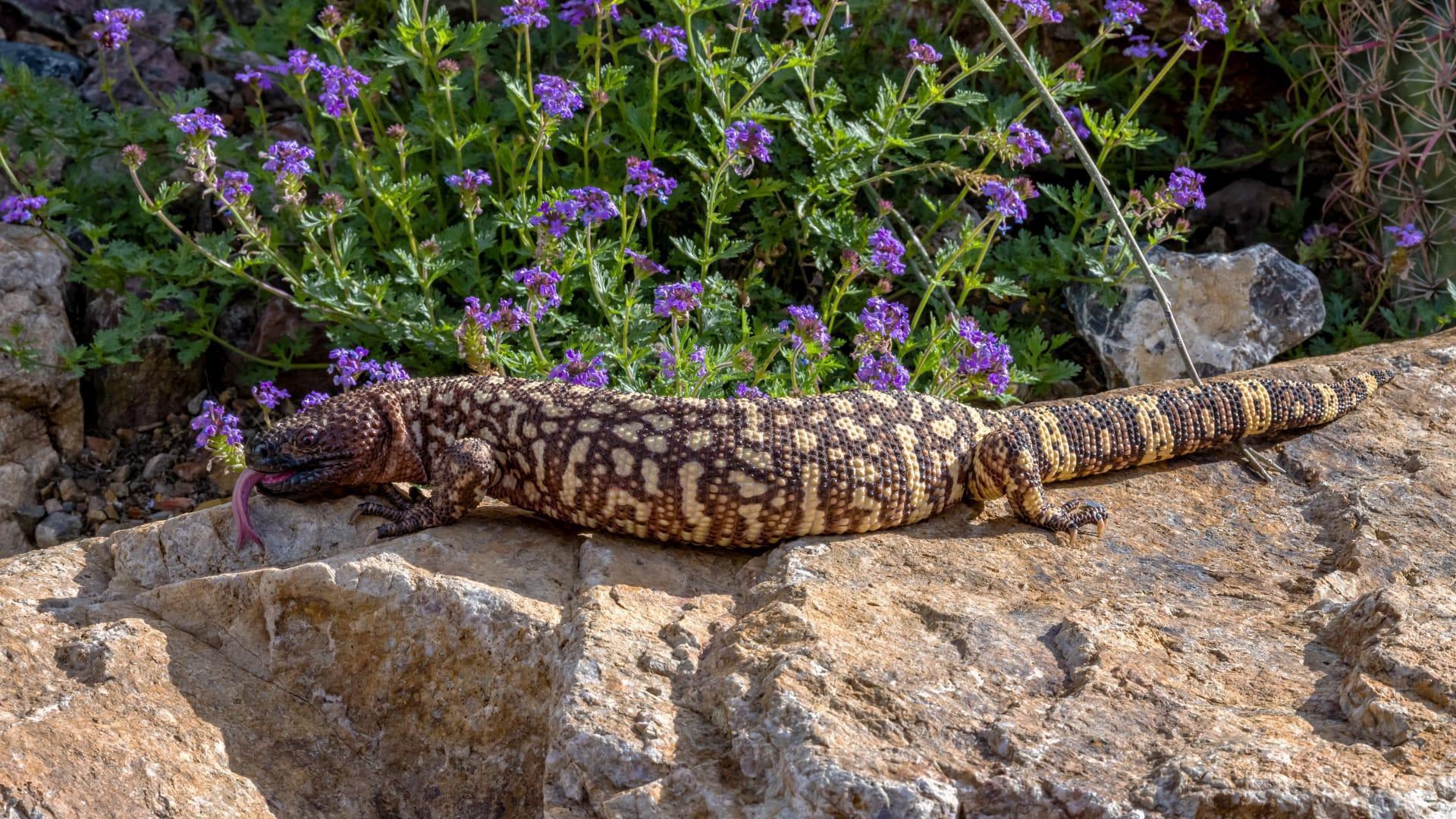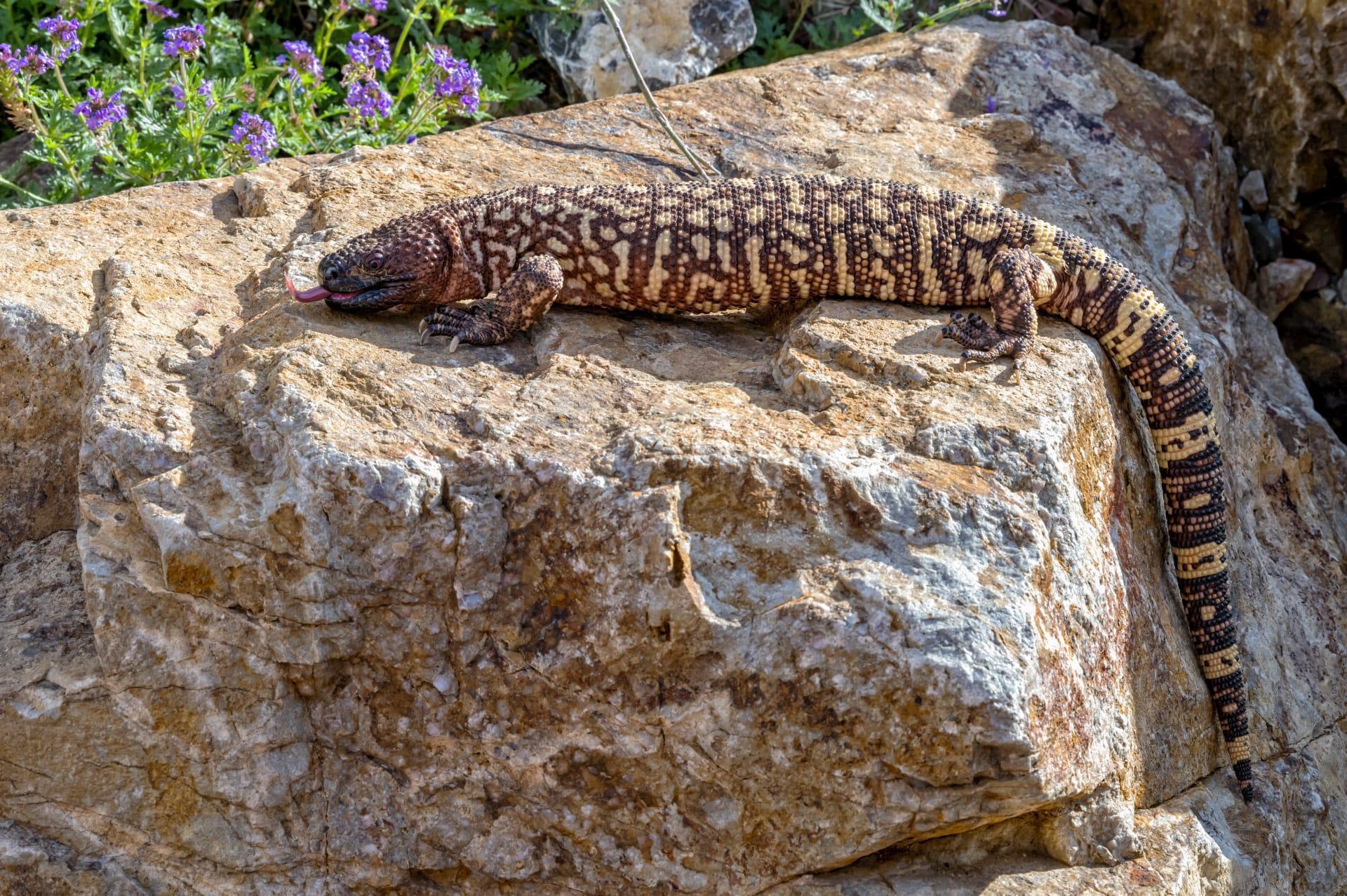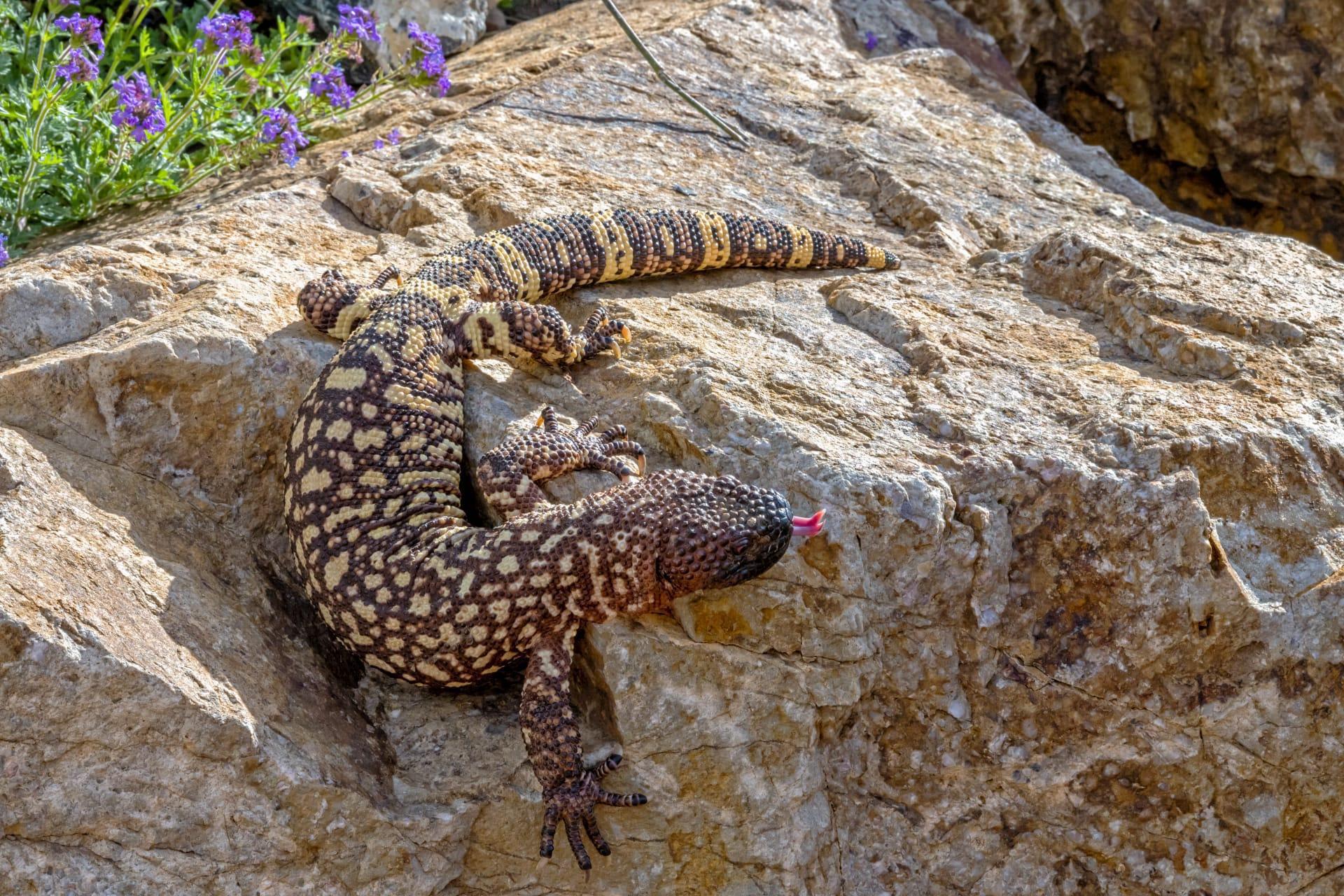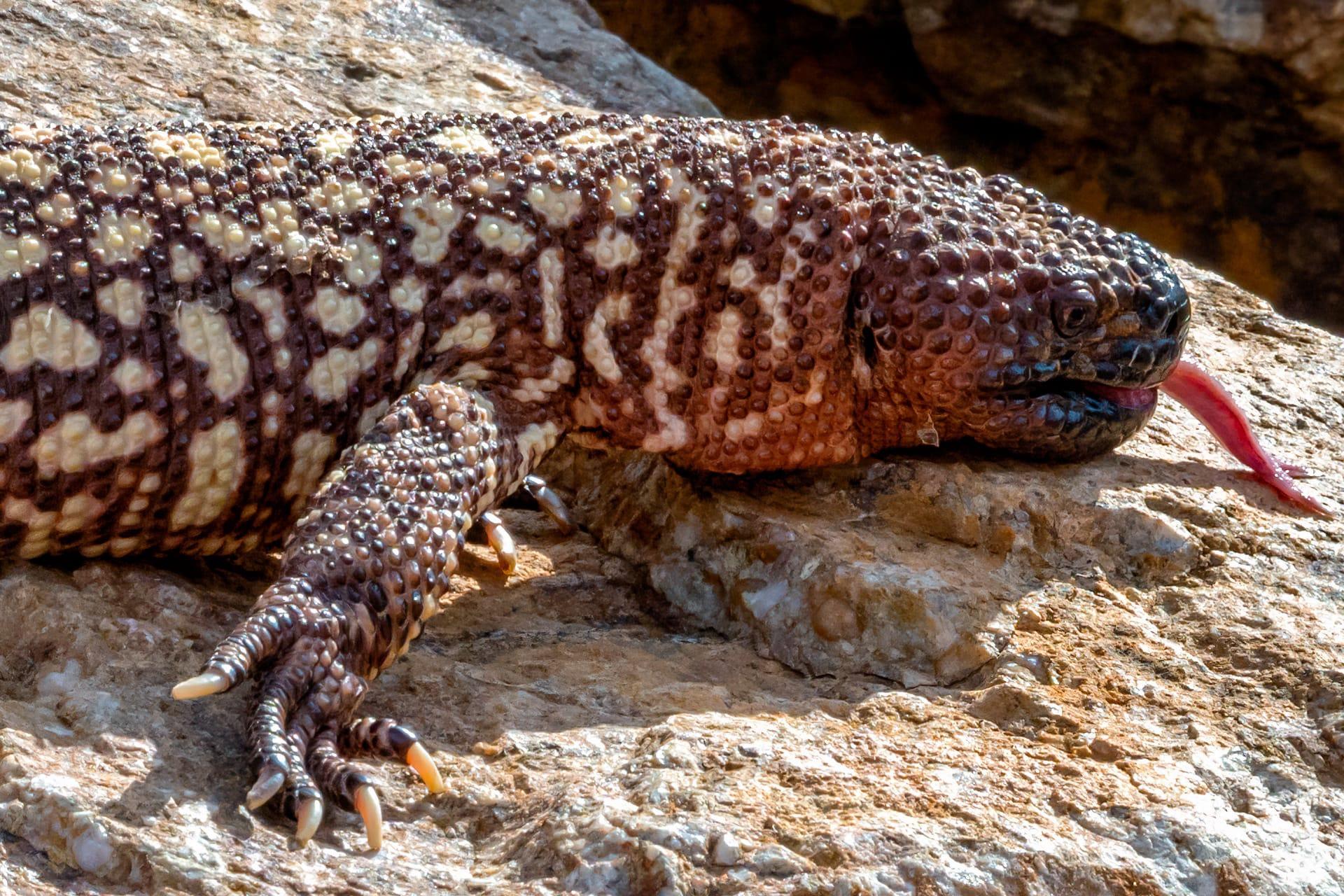Mexican Beaded Lizard Trivia
- Home /
- Trivia Question /
- Animal /
- Mexican Beaded Lizard Trivia
1
Question: What makes the Mexican Beaded Lizard unique in appearance compared to other lizards?
Answer: The Mexican Beaded Lizard, scientifically known as Heloderma horridum, boasts a distinctive look that sets it apart from other lizard species. Its body is covered in bead-like scales, giving it a rugged, almost stony texture. These scales are predominantly black, interspersed with yellow or white, creating a striking contrast. This lizard can grow up to 36 inches long, making it one of the larger lizard species. Its robust build and powerful limbs enable it to move with surprising agility for its size.
Question: How does the Mexican Beaded Lizard's diet reflect its habitat and hunting style?
Answer: Native to the arid environments of Mexico and Central America, the Mexican Beaded Lizard has adapted a diet that suits its habitat. Primarily nocturnal, it preys on small mammals like mice, birds, eggs, and insects. Its hunting style is stealthy and patient; it often waits in ambush for unsuspecting prey. This lizard also possesses a keen sense of smell, helping it locate food in its sparse environment. Interestingly, it can survive on minimal water, extracting most of its needs from its prey.

2
Question: Is it true that the Mexican Beaded Lizard is one of the few venomous lizards in the world?
Answer: Yes, it's a common misconception that all lizards are non-venomous. The Mexican Beaded Lizard is indeed one of the few venomous lizard species. It delivers venom through grooves in its teeth, unlike snakes which use fangs. The venom is used primarily for defense and subduing prey. While painful, its bite is rarely fatal to humans. However, medical attention is advised in case of a bite.
Question: Do Mexican Beaded Lizards lay eggs or give birth to live young?
Answer: Another common misunderstanding about these lizards is their reproductive method. Mexican Beaded Lizards lay eggs, unlike some other lizard species that give birth to live young. The female typically lays a clutch of 2 to 12 eggs, which she buries in sand or soil. The eggs incubate for several months before hatching, with the young lizards being fully independent from birth.

3
Question: How does the Mexican Beaded Lizard adapt to its desert habitat?
Answer: The Mexican Beaded Lizard is superbly adapted to its desert habitat. Its thick, beaded skin helps minimize water loss, crucial in arid conditions. During extreme heat, it seeks shelter in burrows or under rocks, emerging primarily at night to avoid the scorching daytime temperatures. This lizard can also slow its metabolism during periods of scarce food, allowing it to survive long periods without eating.
Question: What role does the Mexican Beaded Lizard play in its ecosystem?
Answer: This lizard is an important part of its ecosystem, serving as both predator and prey. As a predator, it helps control populations of small mammals and insects. Its venomous bite also deters potential predators, contributing to a balanced food chain. Additionally, its foraging activities aid in seed dispersal and soil aeration, promoting plant growth and health in its habitat.

4
Question: Can the Mexican Beaded Lizard be kept as a pet, and what are the challenges?
Answer: While it is legal in some places, keeping a Mexican Beaded Lizard as a pet is challenging and not recommended for casual reptile enthusiasts. They require specific environmental conditions, including controlled temperatures and humidity levels that mimic their natural desert habitat. Their venomous nature also poses a risk, requiring handlers to have experience and knowledge in managing venomous reptiles. Additionally, their diet and space needs are significant, making their care complex and demanding.
Question: How do Mexican Beaded Lizards communicate with each other?
Answer: Communication in Mexican Beaded Lizards is primarily through body language and chemical signals. They use postures and movements to convey dominance or submission, especially during mating season. Chemical cues, or pheromones, play a significant role in their interaction, particularly in locating mates and recognizing territorial boundaries. They also use tactile communication, like rubbing or nuzzling, during courtship.

5
Question: What is the lifespan of a Mexican Beaded Lizard in the wild versus in captivity?
Answer: In the wild, Mexican Beaded Lizards can live for around 20 years, but their lifespan can extend significantly in captivity, up to 30 years or more. This difference is mainly due to the absence of predators and access to consistent food and medical care in captivity. However, maintaining their health requires a carefully controlled environment and diet.
Question: What conservation status does the Mexican Beaded Lizard currently hold?
Answer: The Mexican Beaded Lizard is classified as "Near Threatened" on the IUCN Red List. Their population is facing challenges due to habitat loss, mainly from agricultural development and urbanization. Conservation efforts are focused on habitat preservation and educating locals about the ecological importance of these lizards. Their status highlights the need for continued conservation efforts to ensure their survival.